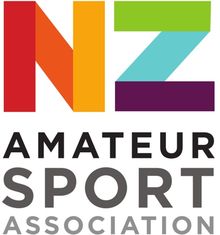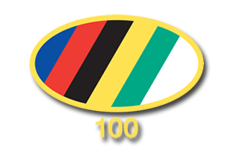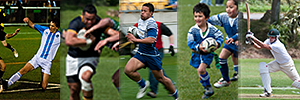WELLINGTON’S “GHOST” RUGBY CLUBS Part 1 – Kaiwarra Rugby Football Club
Above: Kaiwarra Town, looking toward Wellington City, around 1875
Wellington’s rugby history is that of communities who, in the nineteenth century, organised clubs as a means of establishing local identity and pride. In some cases, the history of those communities and their rugby tradition is not well, or only partly, remembered. Such is the case of the Kaiwarra Rugby Football Club, which was formally affiliated to the Rugby Union three times, in 1892, 1902 and 1923, until its final amalgamation with the Onslow Rugby Football Club, in the late 1950s.
Contrary to the record contained in “Wellington’s Rugby History”, which incorrectly records that “the first Kaiwarra Club was formed in 1901” and which also ungenerously notes that “it was re-formed in 1945, but again did not last”, the Club can claim a contribution of more than 30 years to the community fabric of rugby in Wellington, including winning at least five Wellington Rugby Grade Championships.
120 years ago, Kaiwarra (the official, abbreviated name for Kaiwharawhara until 1951), was the most important township in the Onslow Borough, with the Onslow Borough Council based there.
The town was best known for soap and candle manufacture, tanning and fellmongering. Many of the adult men were employed in local factories “which belched smoke and putrid odours over the area”. Despite this, it was said of Upper Kaiwarra (along the Ngaio Gorge Road) that “there is no more beautiful part anywhere near the City.”
The history of rugby at Kaiwharawhara began at the Kaiwarra School, formed in the 1860s (in those days located on the present-day School Road, opposite the bus depot), where it was said that “from the Kaiwarra School … the Poneke Club took its colours”. (The school played in red and black hoops from its earliest days.)
In March 1892, the Club elected William Bowden (Kaiwarra’s Post-Master) as the Club Captain and it was decided to call the Club the “White Star Club”, abbreviated to the “Kaiwarra Stars”. On 30 April 1892, a Special Meeting of the Wellington Rugby Football Union was called to affiliate Kaiwarra to the Union. Including Bowden, the first Club included local identities William Yeatts (a builder), Alfred E Smith, Francis Round and Alfred Woodhouse, all of whom were associated with the Kaiwarra School and were most likely past pupils.
The Club entered two teams into the Wellington Rugby Union competition in 1893 and 1894. However, affiliation was contingent on the payment of annual subscriptions to the Union, otherwise Clubs were not permitted to take part in Union organised matches. On this ruling, publicised in the newspaper in May 1894, the affiliation of the Club is assumed to have lapsed, as it no longer appeared in fixture lists from this time, with the local Association Football Club instead becoming prominent.
After a short hiatus, in early April 1902 (note, not 1901), the Kaiwarra Rugby Football Club was re-formed under the patronage of Thomas Wilford, a later Life Member of the Wellington Rugby Union, who at the time was campaigning for the Hutt electorate.
A decision was made by the Club to enter a team into the Union’s Third-Class Championship, coached by James Flaws, a Shetland Islander and an early Kaiwarra settler. Later that month, an application for re-affiliation to the Union was granted. The 1902 team comprised: Bowden, Bevans, Brown, Atheral, Cameron, Golding, Eagles (2), Fitzgerald, Thorley, Smith, Wall, Hendle, Reddy, Round, Smith and Newbold.
The season was most notable for a player being ordered from the field, in a match against the St. James Club. The following year, the Club entered a team into the Third-Class Championship but did not play.
20 years later, in March 1923, a further application was made to the Wellington Rugby Football Union to affiliate the Club, which was granted. The Club (with 35 registered members) played in royal blue and white hoops and entered teams in the Union’s Fifth Grade and Intermediate Grade competitions.

The 1923 5th Grade side comprised: G. Hetherington (captain), G. Harris, C. Crooks, G. Robin, C. Budley, F. Palmer, R. Swan, A. Taylor, R. Palmer, E. Flaws, J Golding, M. Flynn, E. Wallace, K. Palmer, G. Harris; and Fermin. The Intermediate side comprised: D. Cameron, T. Boyle, S. Crooks, C. Leighton, Mumery, F. Henderson, T. Krebs, P. Krebs, A. Palmer, A. North, J. Rankin, D. Morrison, H. Hendle, W. Newport, W. Campbell and S. Palmer.
Alec Newton, Managing Director of Kaiwarra’s Caledonian Soap Works was elected President of the Club and Alfred Palmer (an Onslow Borough Councillor), Chairman. The Club also fielded a Seven-A-Side team in the Union’s annual sevens competition.
Of note, the Club’s Intermediate side played the curtain-raiser to the New Zealand-New South Wales Test Match at Athletic Park, against Poneke, won by Poneke by 22 points to 3.
The following year, in which Harold Hendle was the Club’s Honorary Secretary, Kaiwarra won its first Wellington Rugby Championship title, winning the Intermediate Grade unbeaten, taking 29 championship points out of the season, of a possible 30.
The Intermediate Grade (the lowest of the Union’s senior rugby grades) existed for a decade from 1922 until 1931, when it was absorbed into the Union’s Third Grade. A Club was required to have at least one team in the Intermediate Grade (or above) to qualify for affiliation to the Union. All other Wellington Rugby grades (from fourth to seventh) were restricted to those aged 18 and a half years, or younger.
Through the years leading up to World War 2, the Club was a strong contributor to Wellington Rugby’s Junior Grades with up to four teams playing in any given year, with varying degrees of success.
The Great Depression provided an opportunity for the Club to establish a more permanent home, with 15 men employed on Relief Works in 1929 to construct a playing field on the site of the current Kaiwharawhara Park (off Rangiora Avenue).
The land was purchased for 4,000 pounds and the field constructed for a further 1,000 pounds, with the ground first used for fixtures in 1931, although it was not considered large enough for Senior fixtures.
It’s not certain where the Club trained before this time, although there is some suggestion of a vacant field between the Hutt Road and the railway line being used for this purpose, following the reclamation work undertaken by the Harbour Board in 1909. (Interestingly, the spoil used for the reclamation work was taken from the hills on the Ngaio Gorge Road, an area of current geologic instability).
A Club Gymnasium was also established in 1931 in the old school, (which had by now moved to its current location on Fore Street).
Overall, the 1930’s was a strong period in the Club’s history, with at least three teams entered in the Union’s competitions, per year. In 1934, the first suggestion of an amalgamation with Onslow was mooted, but was declined by a Kaiwarra Club sub-committee established to examine the proposal.
In 1936, the Club entered a team in the Senior second division for the first time and in 1937 the Club won the second division of the Junior Championship, defeating Onslow by 12 points to 9, earning promotion to the first division. In 1938, the Club was reported to be in a “healthy financial position”.
“During the season the club subsidised the erection of a new dressing shed on the ground to the extent of 20 pounds, and hopes are high that before long the water will be laid on for showers, etc., after games and training nights.” The Junior Team travelled to Wanganui to play a Wanganui team, in the first of several regular exchanges in the pre-war years.
Success was short-lived. In 1939, the Club played in the Junior First Division, losing all 16 games in the season.
In August 1940, the Club advised that “owing to the number of players who had taken up military duties, all teams would be withdrawn from the competition after August 24.”
And so in 1941, the Club went into recess, together with the Karori and Technical College Old Boys Clubs. During the war, the Club’s home ground was commandeered by the Army for the accommodation of US troops, with four barracks built across the playing field.
After the war the field was turned into a “Transit Camp” for 40 families awaiting permanent Council accommodation, with the Council noting that “in Taranaki Street 60 persons, of whom 20 were single Chinese, were living in 14 dwellings and shops which the council wished to demolish, but could not do so because it could not find alternative accommodation.”
In 1945, like many Clubs, Kaiwarra resumed competition, entering a team in the third division of the Third Grade, which was to be the source of many Club championship victories over the ensuing decade.
The Club won the third division of the Third Grade in 1947, then again in 1951, 1955 and 1956. In 1957 there is no further public record of the Club, with the probable outcome that the long spoken about merger with Onslow RFC occurred at or around this time, following Onslow’s famous Jubilee Cup victory in 1955.
While the Wellington senior representative side appears to never have boasted any Kaiwarra RFC players, a number trialled for the Wellington Junior representatives (a team comprising players aged 23 years or under), including Robert Williams (the son of the former Onslow Mayor) and Fred Tietjens in 1933. Stuart Franklin also trialled for the Wellington Third Grade representative side in 1935, (a team for players aged under 20).
Tietjens was selected as Vice-Captain of the Wellington Junior team in 1933 (before transferring to Onslow Club the following year) and is therefore probably Kaiwarra RFC’s most famous son in terms of the Club’s representative achievements, while Williams was also selected for the Wellington Juniors in 1938.
Both the Wellington Juniors and the Third Grade representatives played regular fixtures against neighbouring Provinical Unions (Horowhenua, Manawatu, Wairarapa and occasionally Nelson), throughout the 1930s.
Over a period of 65 years, from 1892 to 1957, Kaiwarra played an important role in Wellington’s sporting community by providing a positive rugby experience for junior players, many of whom were educated or employed locally. Perhaps there is an opportunity for this to be recognised by creating a small plaque at the Club’s former home ground at Kaiwharawhara Park.
Steven White, 19 Mar 2019
Adam Julian, 19 Mar 2019
Steven White, 12 Mar 2019
Adam Julian, 04 Mar 2019
Steven White, 12 Feb 2019








.jpg)






